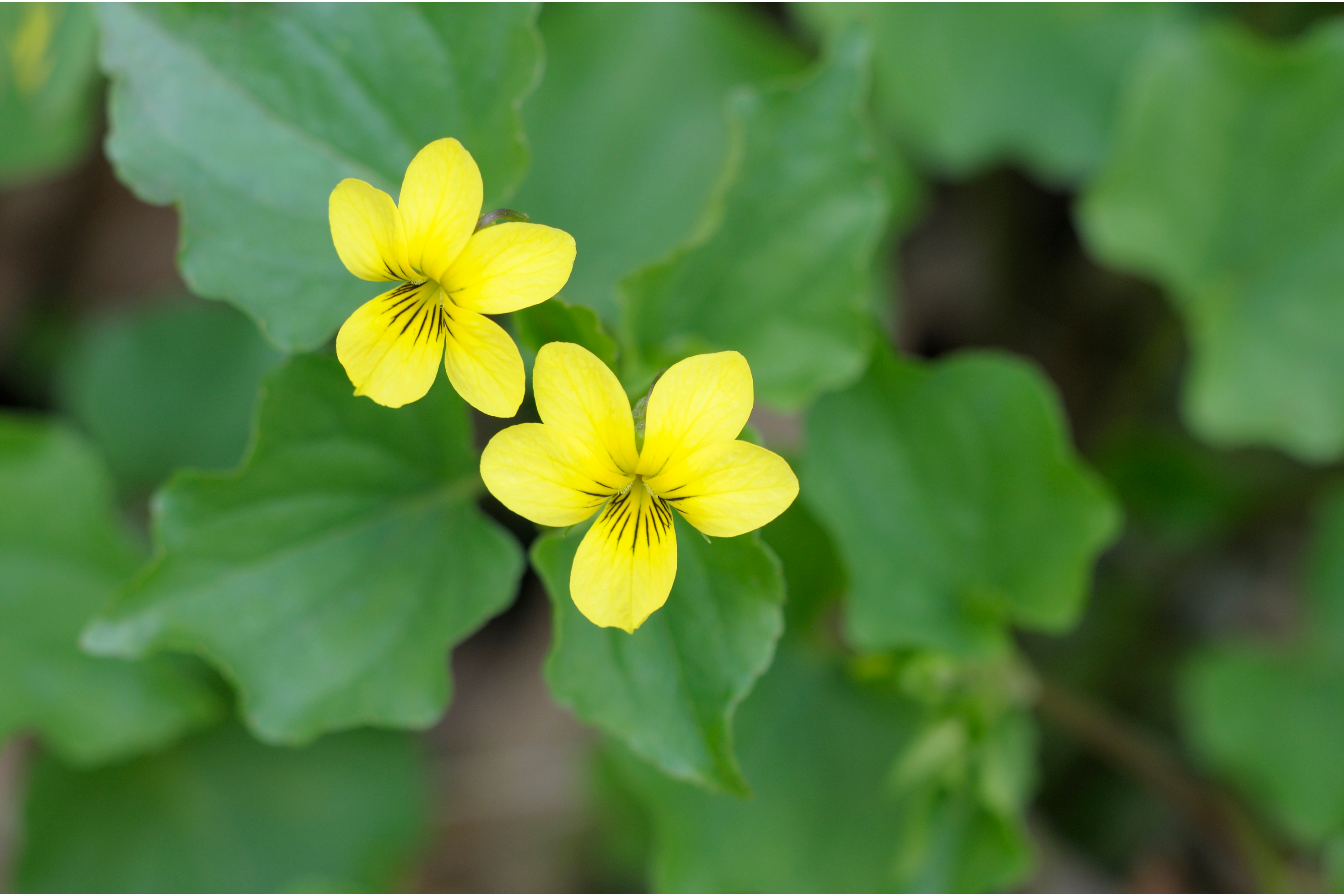Pioneer violet
(Viola glabella)

Description
Viola glabella, the stream violet or pioneer violet, is usually found along streams or in moist woods in northeastern Asia and northwestern North America. Its petals are yellow on both sides, with the exception of dark purple nectar guides on the front of the lower three petals. The flowers arise from the same stems as the leaves. Viola glabella is a perennial herb, growing to 0.1 m (0ft 4in) by 0.2 m (0ft 8in) and blooming from April to July. The plant is deciduous and dies back completely to its roots during Autumn. Viola glabella prefers moist, well-drained soil and can grow in part shade. Acidic and neutral soils are suitable for Viola glabella, which prefers a pH between 6 and 6.5, and becomes chlorotic if the pH is too high. Young leaves and flower buds are edible, raw or cooked, but the yellow flowers can cause diarrhoea. Viola is a genus of flowering plants in the violet family Violaceae. It is the largest genus in the family, containing between 525 and 600 species. Most species are found in the temperate Northern Hemisphere; however, some are also found in widely divergent areas such as Hawaii, Australasia, and the Andes. Some Viola species are perennial plants, some are annual plants, and a few are small shrubs. Many species, varieties and cultivars are grown in gardens for their ornamental flowers. In horticulture the term pansy is normally used for those multi-colored, large-flowered cultivars which are raised annually or biennially from seed and used extensively in bedding. The terms viola and violet are normally reserved for small-flowered annuals or perennials, including the wild species. Annual or perennial caulescent or acaulescent (with or without a visible plant stem above the ground) herbs, shrubs or very rarely treelets. In acaulescent taxa the foliage and flowers appear to rise from the ground. The remainder have short stems with foliage and flowers produced in the axils of the leaves (axillary). Viola typically have heart-shaped or reniform (kidney-shaped), scalloped leaves, though a number have linear or palmate leaves. The simple leaves of plants with either habit are arranged alternately; the acaulescent species produce basal rosettes. Plants always have leaves with stipules that are often leaf-like.
Taxonomic tree:







